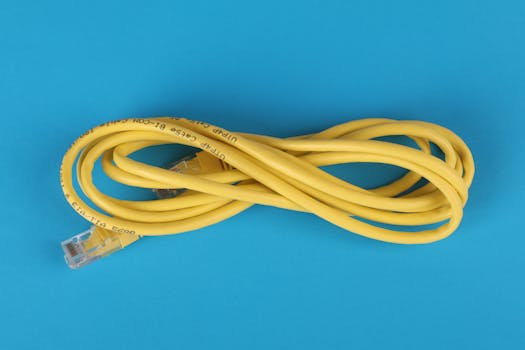From Copper to Fiber: The Revolution of Internet Infrastructure in Africa
The African continent is undergoing a significant transformation in its internet infrastructure, shifting from traditional copper-based networks to modern fiber optic connections. This revolution is expected to enhance internet speeds, reduce costs, and increase accessibility across the region.

From Copper to Fiber: The Revolution of Internet Infrastructure in Africa
From Copper to Fiber: The Revolution of Internet Infrastructure in Africa is transforming the way people connect and access information. The African continent is undergoing a significant transformation in its internet infrastructure, shifting from traditional copper-based networks to modern fiber optic connections. This revolution is expected to enhance internet speeds, reduce costs, and increase accessibility across the region. The focus on From Copper to Fiber: The Revolution of Internet Infrastructure in Africa is crucial as it holds the key to unlocking the continent’s digital potential.
Introduction to Africa’s Internet Infrastructure
Africa’s internet infrastructure has historically been characterized by a reliance on copper-based networks, which have limitations in terms of speed and capacity. However, with the advent of fiber optic technology, the continent is now witnessing a significant shift towards more modern and efficient connectivity solutions. Fiber optic cables have the ability to transmit data at much faster speeds and over longer distances, making them an ideal choice for supporting the growing demand for internet services in Africa.
The migration from copper to fiber is not just about upgrading the existing infrastructure; it’s about creating a new paradigm for internet access and usage. Fiber optic connections enable the delivery of high-speed internet, which is essential for a wide range of applications, including online education, e-commerce, and digital healthcare. Furthermore, fiber optic networks are more reliable and less prone to outages, ensuring that users have consistent and uninterrupted access to the internet.
Benefits of Fiber Optic Infrastructure in Africa
The benefits of transitioning to fiber optic infrastructure in Africa are multifaceted. Firstly, it significantly enhances internet speeds, allowing for faster data transmission and download times. This improvement in speed is crucial for supporting bandwidth-intensive applications such as video streaming and online gaming, which are becoming increasingly popular across the continent.
Secondly, fiber optic connections have the potential to reduce costs associated with internet access. By providing a more efficient and reliable means of connectivity, fiber optic networks can help lower the operational expenses of internet service providers, which can then be passed on to consumers in the form of more affordable internet plans.
Lastly, the expansion of fiber optic infrastructure in Africa is expected to increase accessibility to the internet, particularly in rural and underserved areas. Fiber optic cables can be laid out over long distances, reaching remote communities that have been historically disconnected from the digital world. This increased accessibility can have a profound impact on economic development, education, and healthcare in these areas, contributing to a more equitable distribution of digital opportunities across the continent.
Challenges and Opportunities in Africa’s Fiber Optic Market
Despite the numerous benefits, the development of fiber optic infrastructure in Africa also faces several challenges. One of the primary hurdles is the high cost of deploying fiber optic cables, particularly in rural areas where the cost per kilometer can be significantly higher due to the lack of existing infrastructure.
Another challenge is the issue of regulatory frameworks, which can sometimes hinder the rapid deployment of fiber optic networks. Inconsistent or outdated regulations can create uncertainty for investors and operators, slowing down the pace of fiber optic deployment across the continent.
However, these challenges also present opportunities for innovation and investment. The African fiber optic market is attracting significant interest from international investors and operators, who see the continent’s burgeoning demand for digital services as a lucrative opportunity for growth. Additionally, the development of new technologies and deployment strategies, such as the use of aerial fiber optic cables, is making it easier and more cost-effective to roll out fiber optic infrastructure in challenging terrains.
Conclusion and Future Prospects
In conclusion, the revolution of internet infrastructure in Africa, from copper to fiber, marks a significant milestone in the continent’s digital journey. As fiber optic connections continue to expand across Africa, they will play a critical role in supporting economic growth, improving access to information, and enhancing the overall quality of life for millions of people.
Looking ahead, the future prospects for fiber optic infrastructure in Africa are promising. With ongoing investments in fiber optic deployment, the continent is poised to become a major player in the global digital economy. As such, it is essential for policymakers, operators, and investors to continue working together to address the challenges associated with fiber optic deployment and to capitalize on the opportunities that this technology presents.




